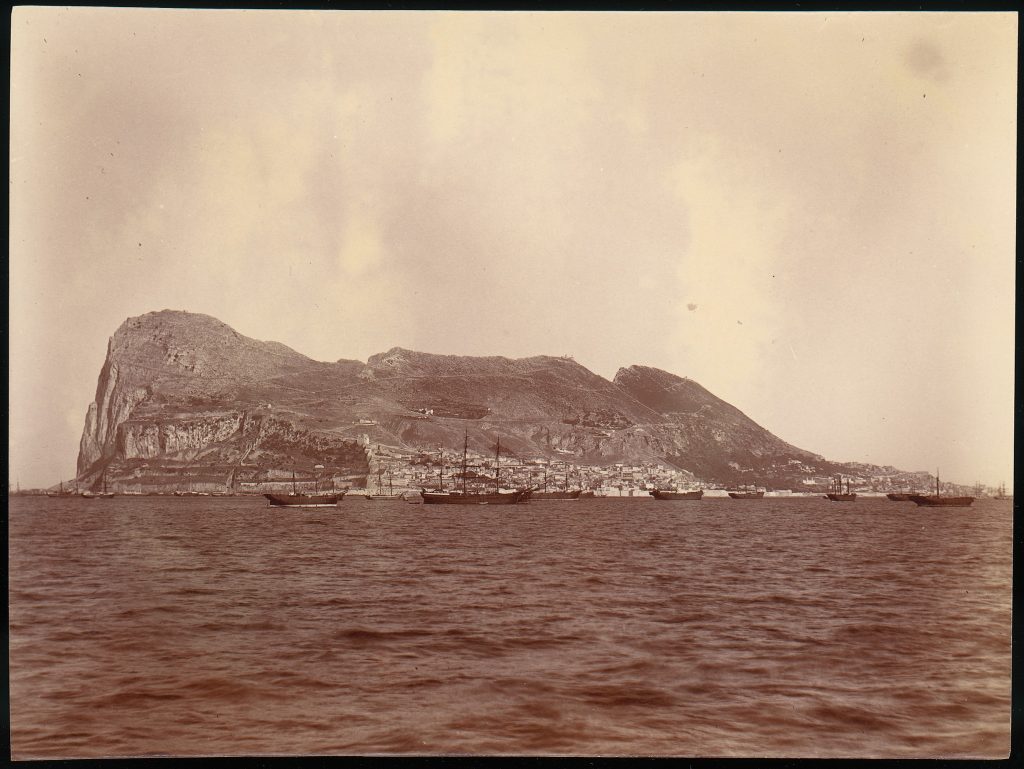Podcast: Play in new window | Download (Duration: 1:01:33 — 85.2MB) | Embed
Subscribe: Apple Podcasts | Stitcher | More

Artist Unknown
Image in the Public Domain
The Faithful God
Have you ever heard said of someone, “That guy is steady as a rock”? Perhaps you know someone like that. Maybe someone has said it about you. He’s as “solid as the Rock of Gibraltar”. That’s a well-known saying; isn’t it? It’s a compliment we give to people who can be counted on because we view the Rock of Gibraltar as the very emblem of unshakable reliability. In fact, a very old and very well-known insurance company decided to use the Rock of Gibraltar as their corporate symbol. According to their website, in 1896 this company adopted the marketing slogan, “The Prudential has the strength of Gibraltar”. If you’re in the insurance business you want your customers to know you’ll be around awhile; right? You want the insured to know you can be counted on; don’t you? To this very day, you will see the Rock of Gibraltar in the Prudential Insurance corporate logo.

There are a few more interesting points I want to make about this famous natural landmark that have some relevance to today’s lesson. The Rock of Gibraltar, known in antiquity as one of the pillars of Hercules…no doubt adding to its legendary mystique of power and invincibility, was formed during the Jurassic Period according to a paper published by Earlham College. It was, most likely made when shells of sea creatures accumulated eventually forming a large limestone promontory. However, what we see today is NOTHING like it was millions of years ago. Here is the relevant point; the point that I want to make that relates to our podcast for today. One of the characteristics of limestone, the rock that forms “The Rock” (Gibraltar, not the actor) is that it is made up of calcite and calcite dissolves…albeit sometimes quite slowly, in water. The Rock of Gibraltar is now actually at the tip of a peninsula. You know what a peninsula is; don’t you. A peninsula is a piece of land surrounded, on three sides, by water and, over the many millennia, this surrounding water has significantly CHANGED this mighty formation that ironically stands as a symbol of permanence. Some have suggested that what now sits on one side of the Strait of Gibraltar may have, at one time, stretched all the way across it, cutting the Mediterranean Sea off from the Atlantic Ocean. In addition, one of the more popular features of the Rock of Gibraltar that draws so many tourists, year after year, are the many caves that crisscross its interior. Well, these caves have only appeared relatively recently (geologically speaking, of course). In other words, there were no caves in the Rock of Gibraltar when it was first formed. Slowly the inside AND the outside of the Rock of Gibraltar have changed, significantly. If you and I were around 4.5 million years ago and we decided to visit the Rock of Gibraltar, it would look very different than it does now.
“What’s your point?” The Rock of Gibraltar, that paragon of permanence, that shrine of stability, that rock-hewn chapel of unchangingness is, in fact, in a constant state of changing. Yes, the change is slow but it is changing. Time, wind and waves are slowly but steadily transforming this wonder of nature that we seem to think is immutable. I suppose we could even say that this momentous natural structure will eventually return to the sediment from whence it came. It’s just another example of the inevitable truth of the statement of the so-called “weeping prophet”, Heraclitus. He famously observed that “Nothing endures like change”. All created things change and, what’s worse is most of that change, is, in fact, deterioration. Everything changes. Everything eventually breaks down (see 2nd Law of Thermodynamics). Of all the things I have said to you over the years you must agree this is the least controversial. No one could argue with me on that point…except perhaps a Darwinist but, let’s leave that for another day. Everything changes, even the Rock of Gibraltar. Change is inevitable and inescapable for all things…except One. In all the Universe there is only one unchangeable entity, God. Only the created changes, never the Creator. That is where today’s lesson picks up.
But, of course, before you begin this or any Biblical study, take a few moments to pray that God will guide you through His Word so that you may receive it as He had intended it to be received. Ask God to give you the understanding that will allow you to apply His Word to your life and for His Glory.
